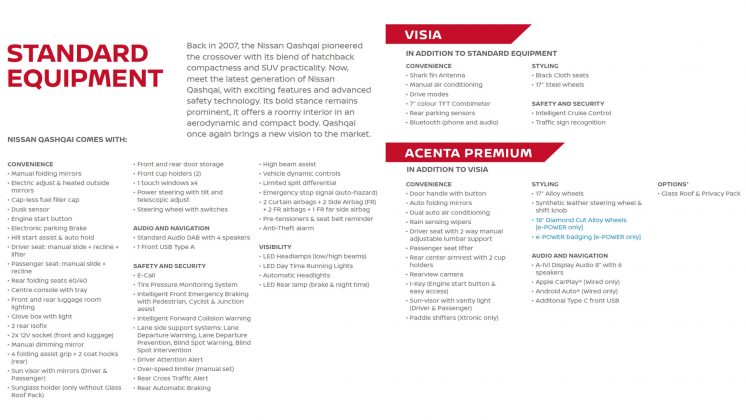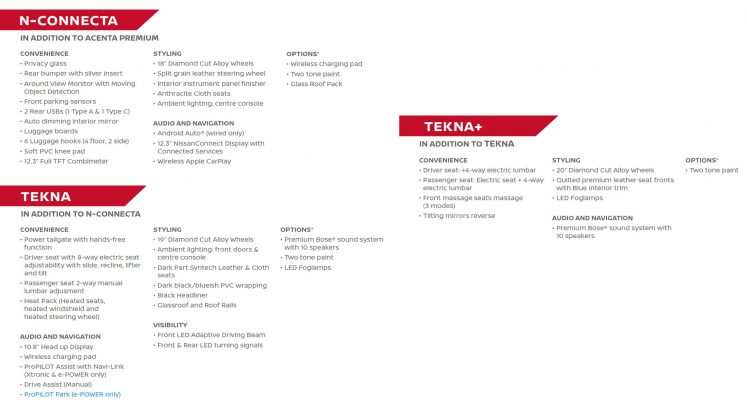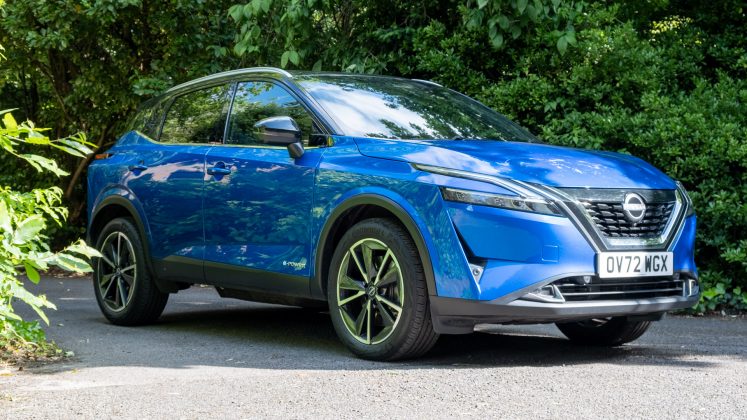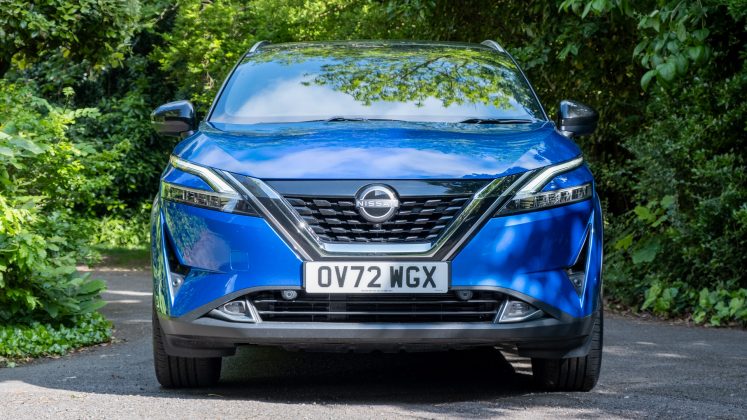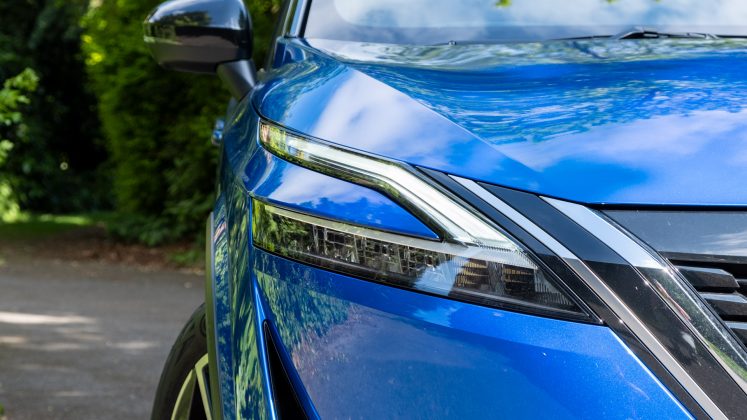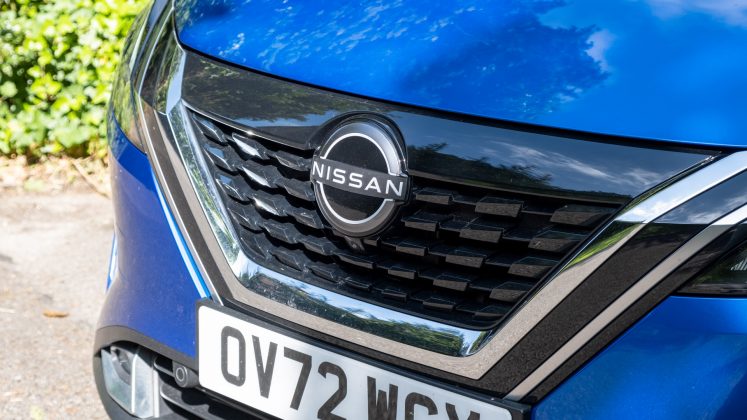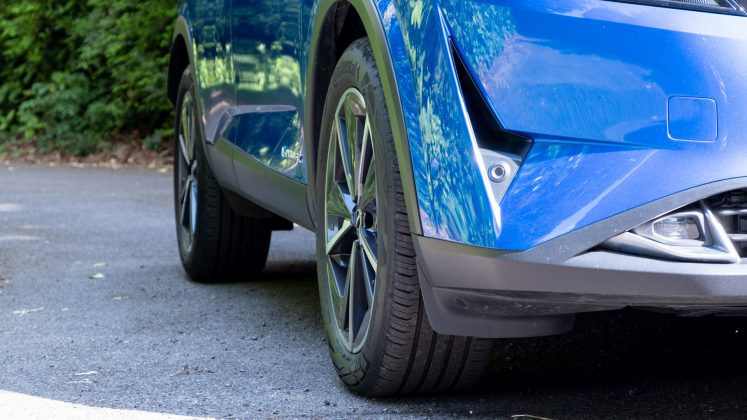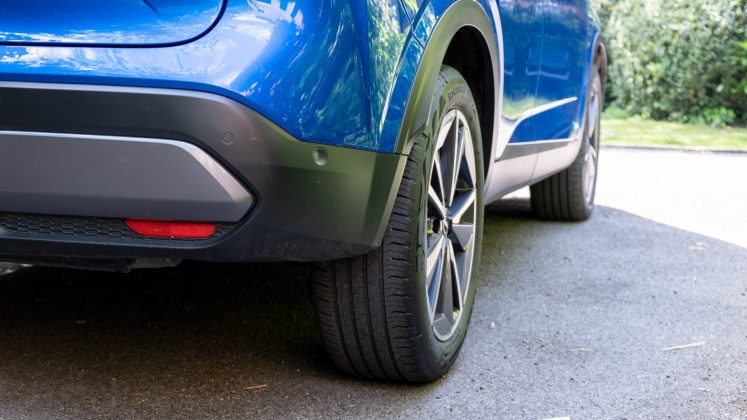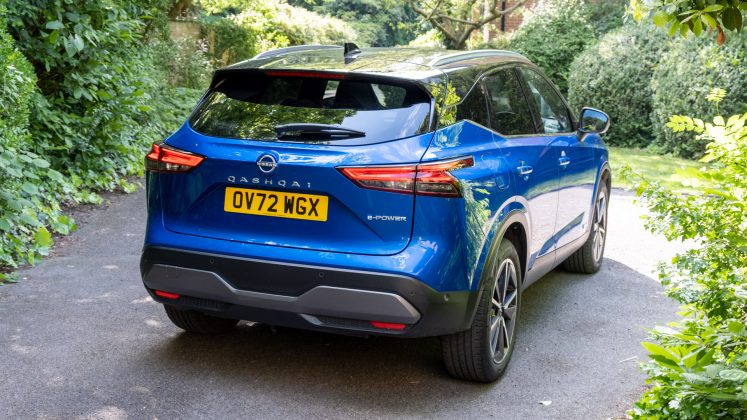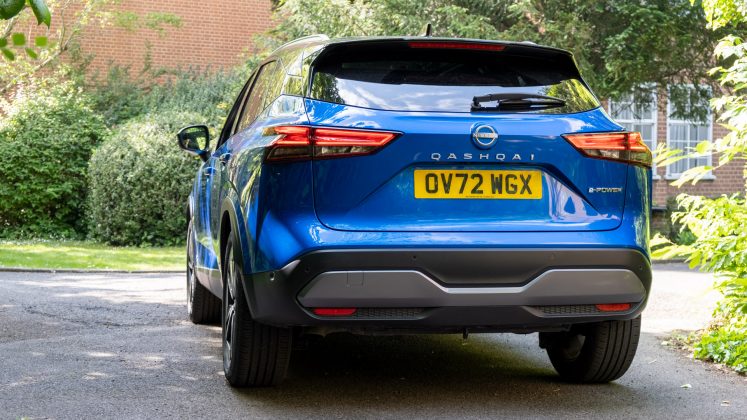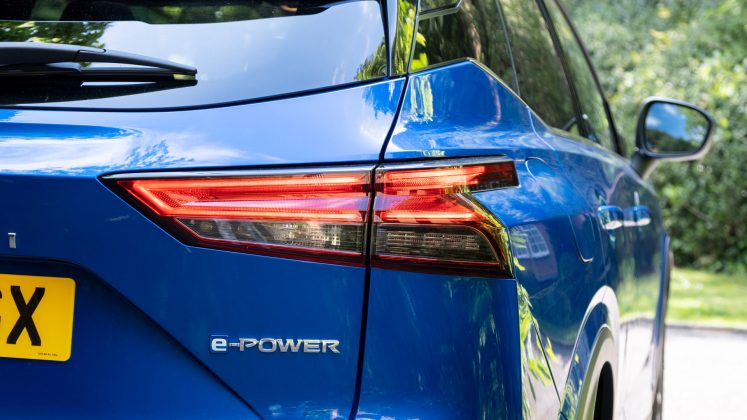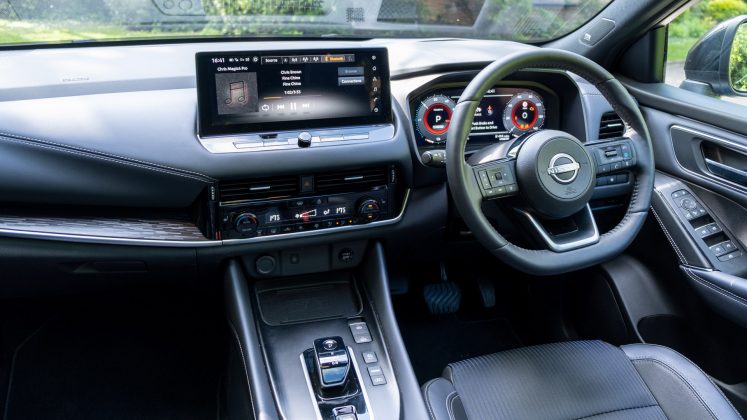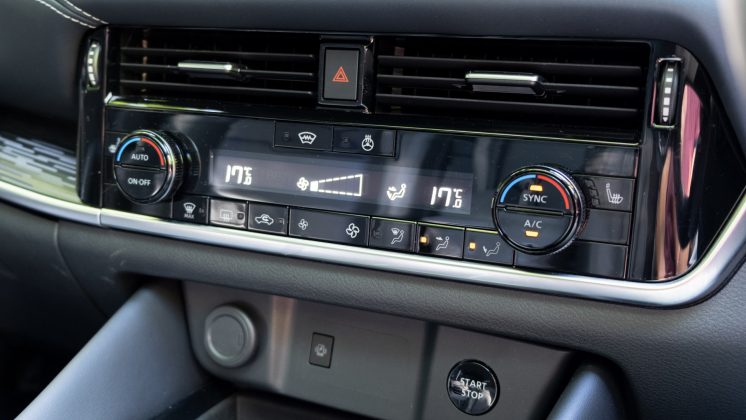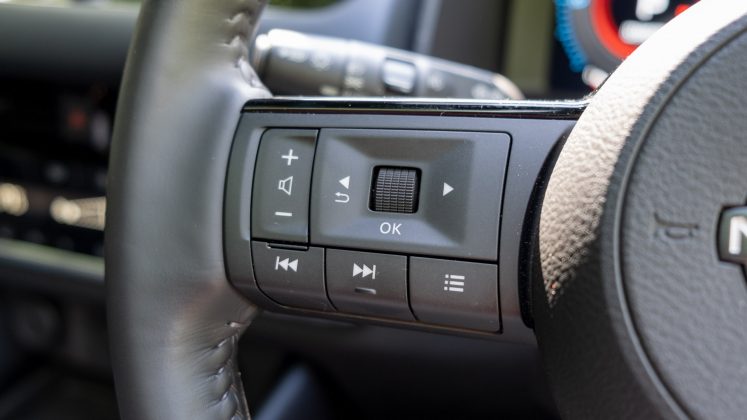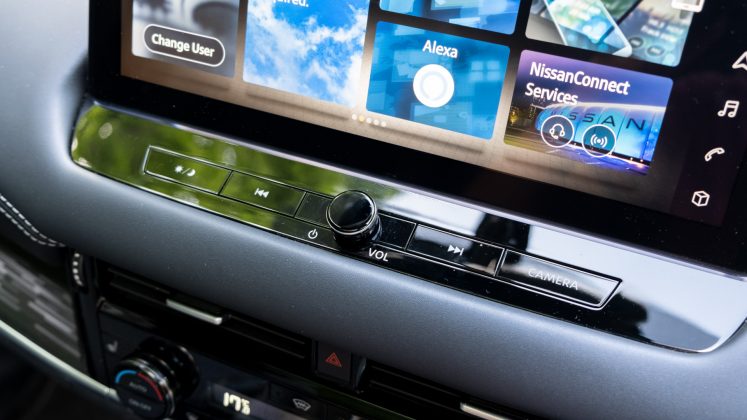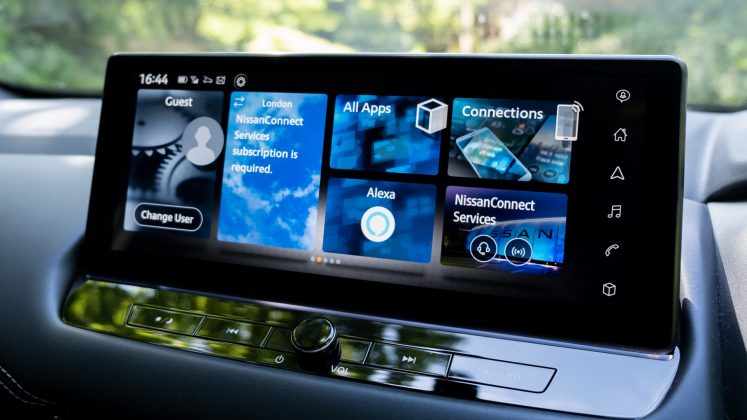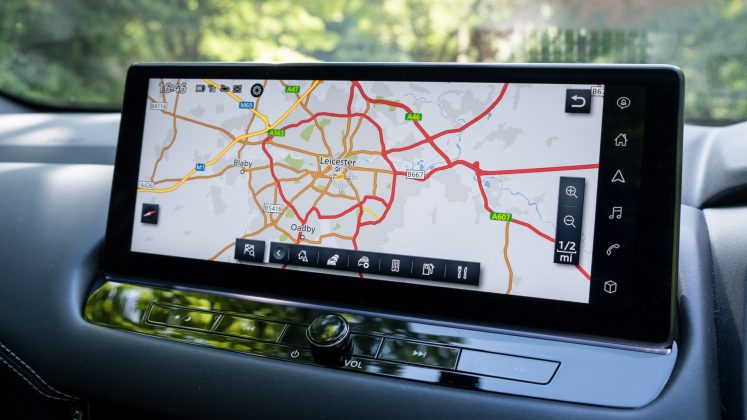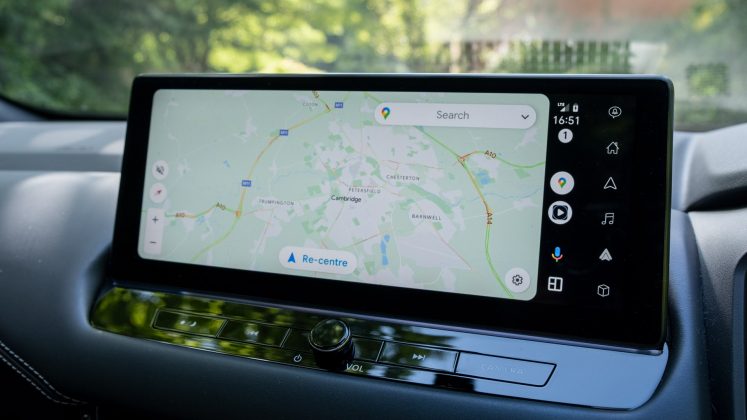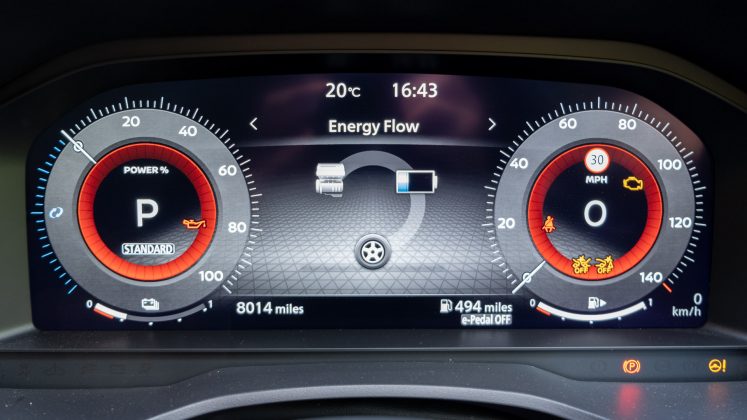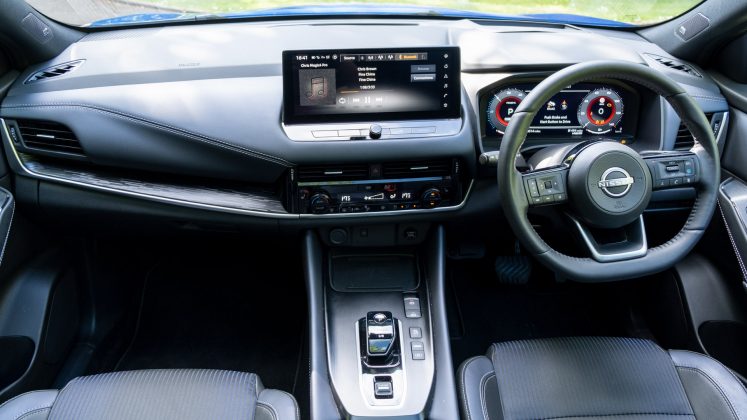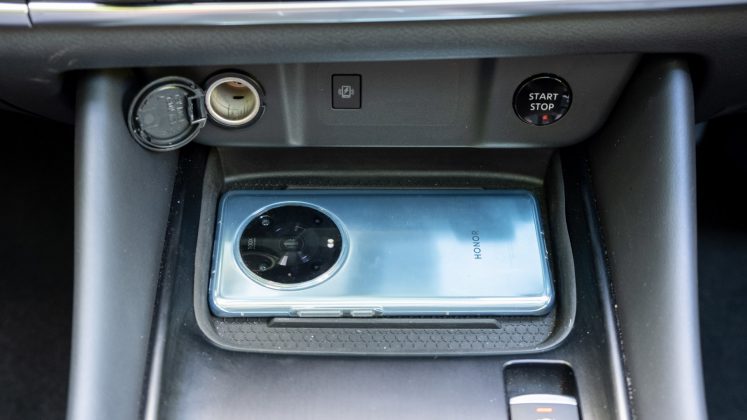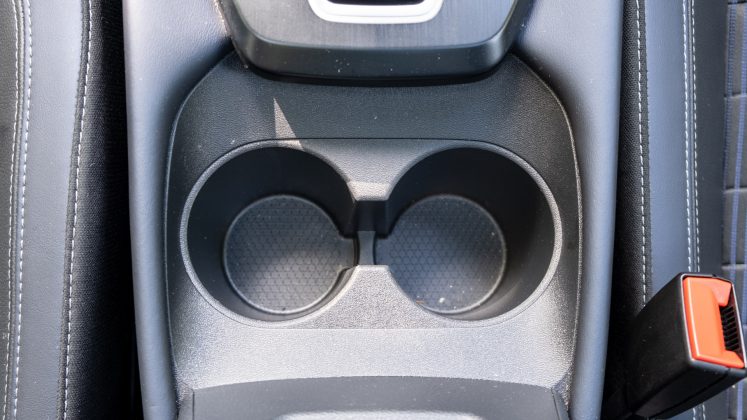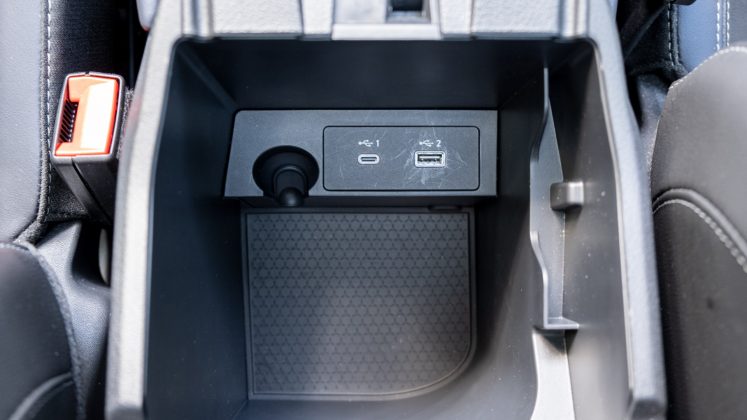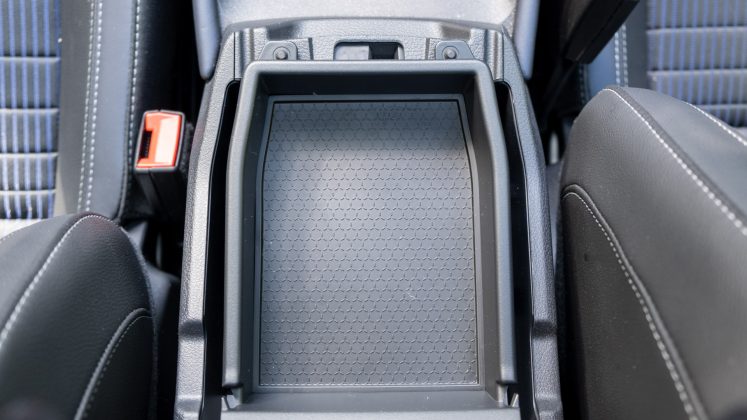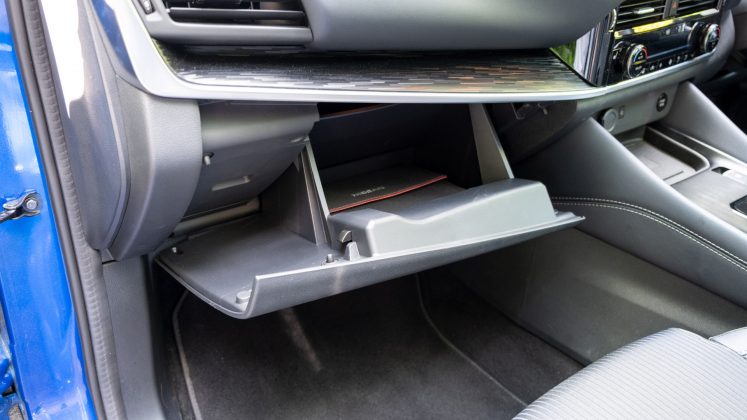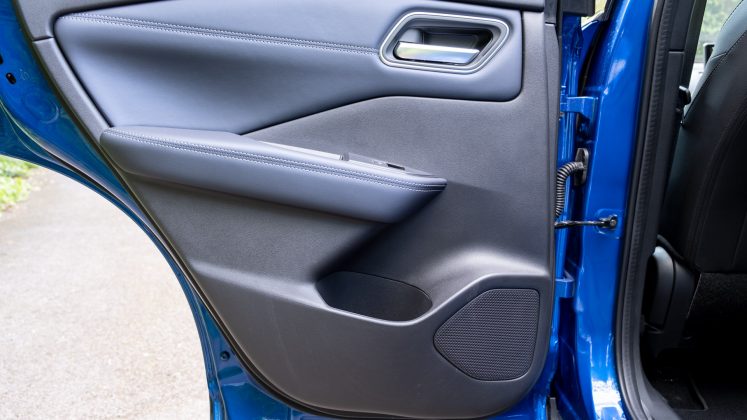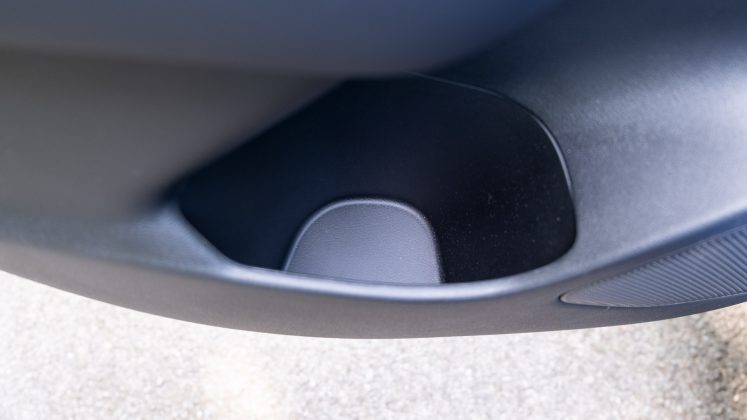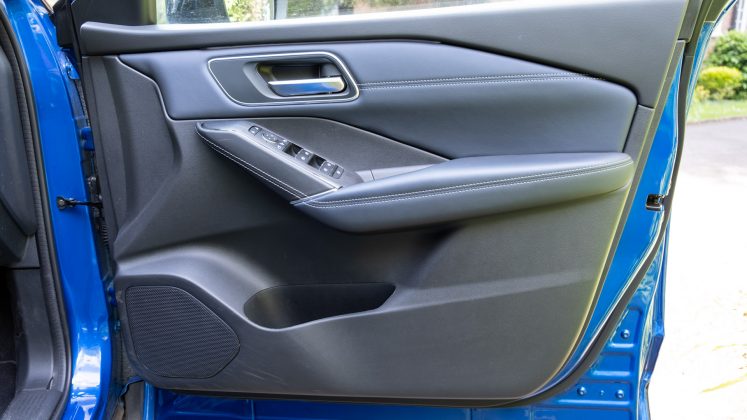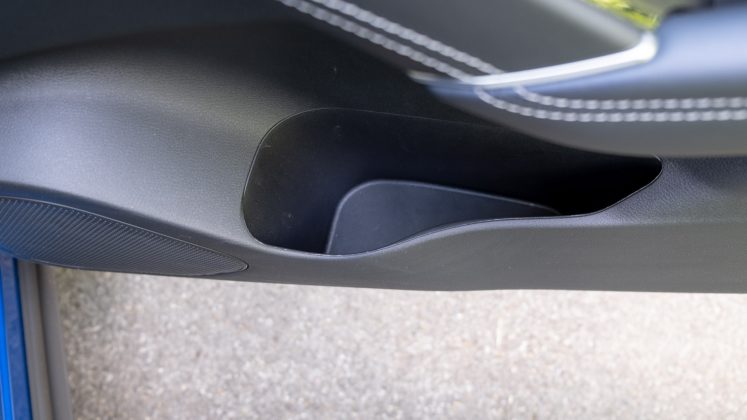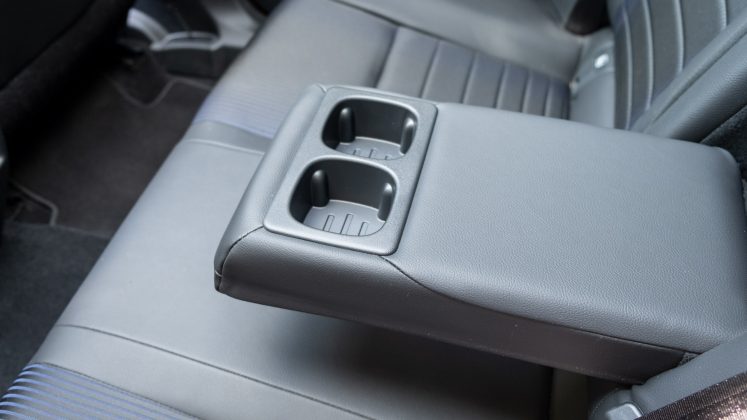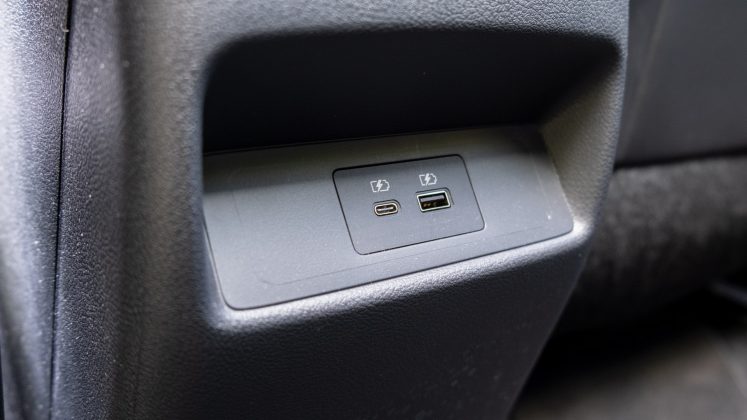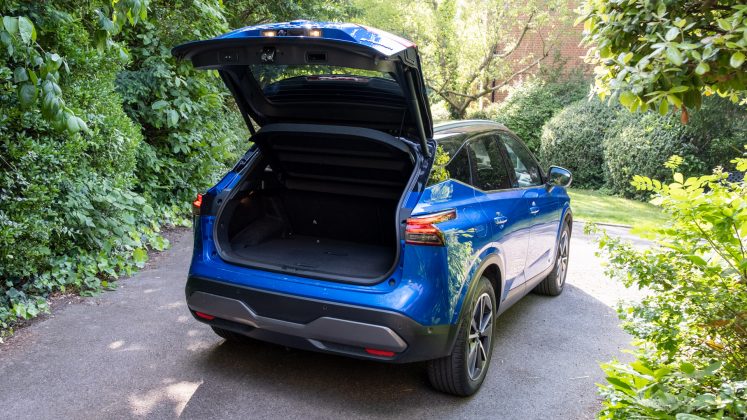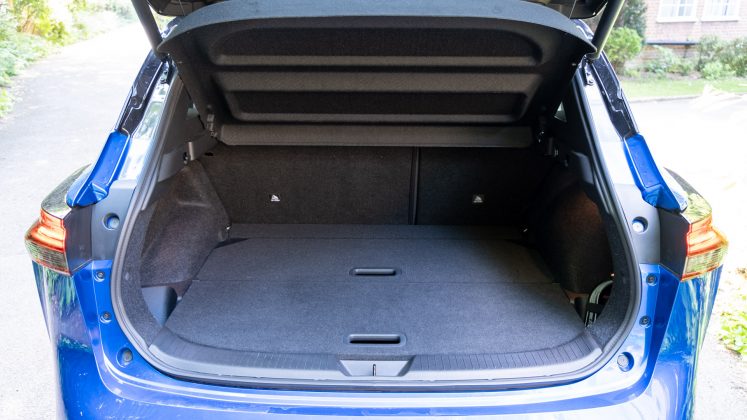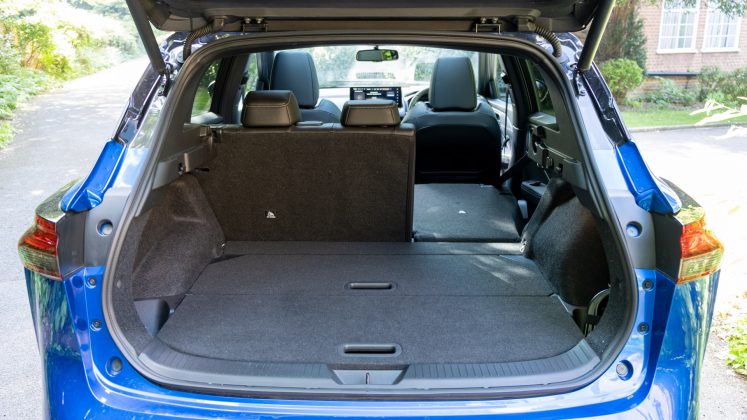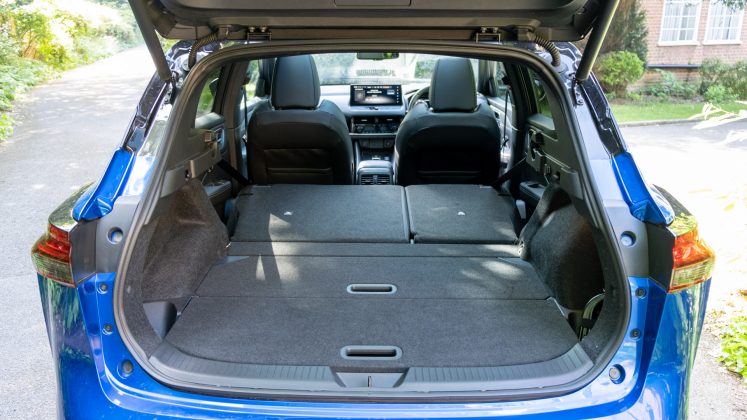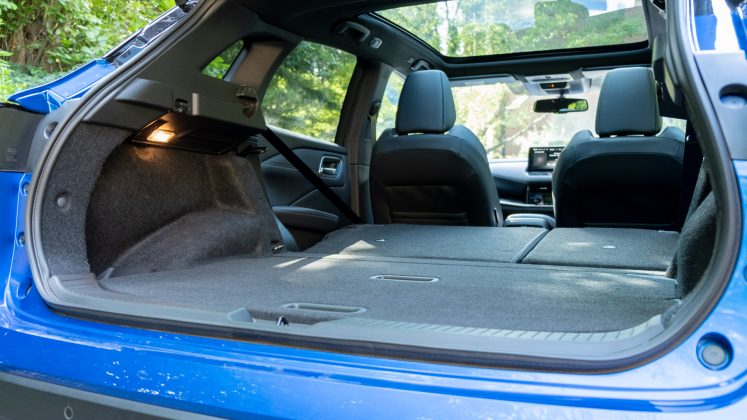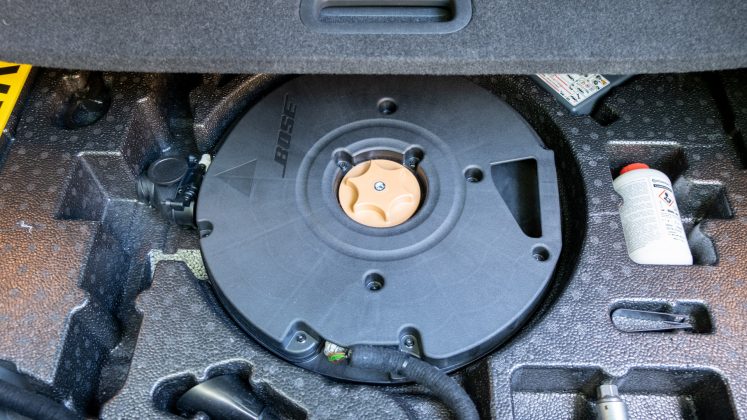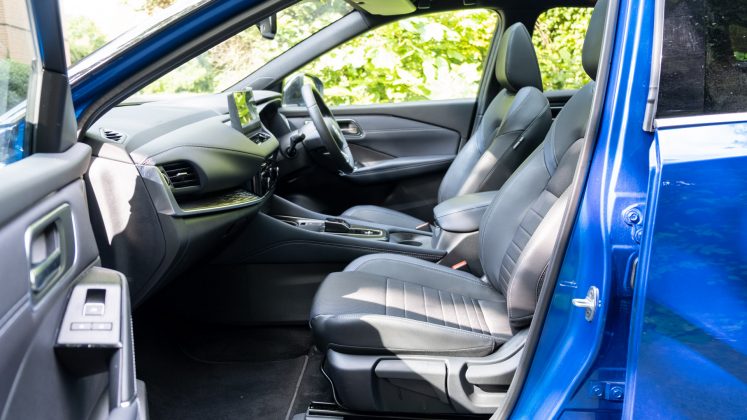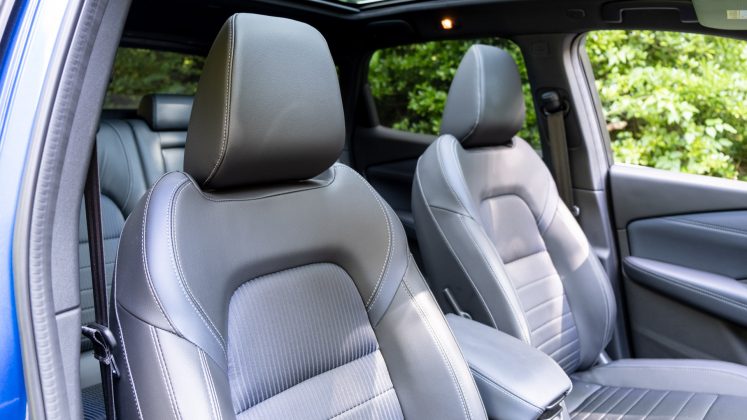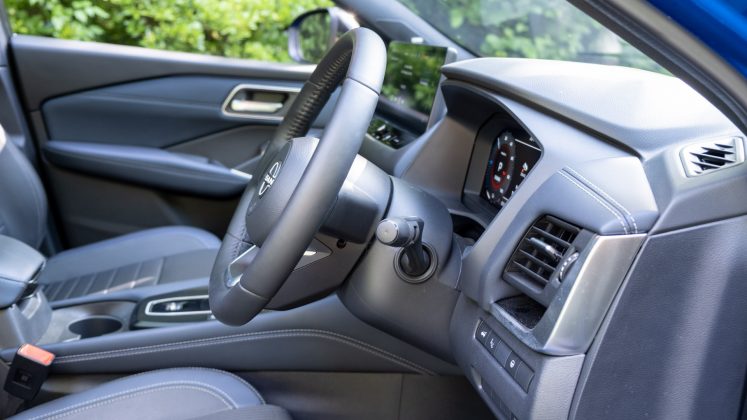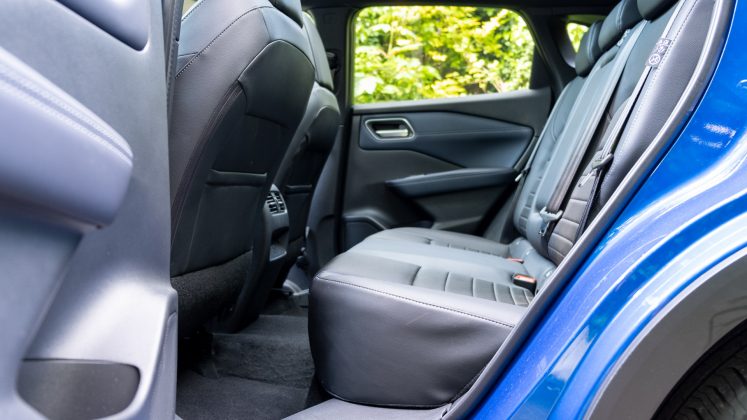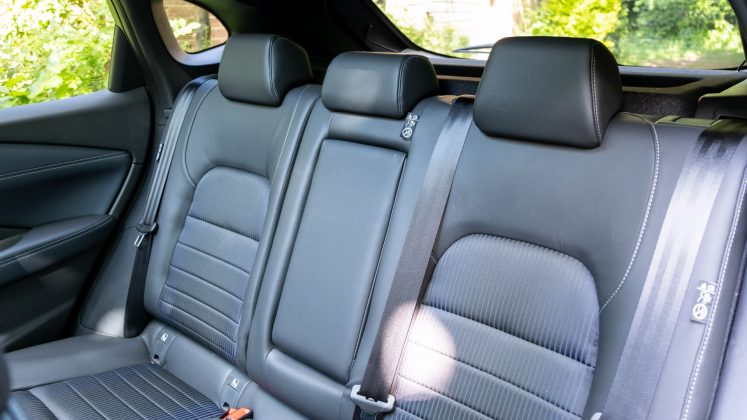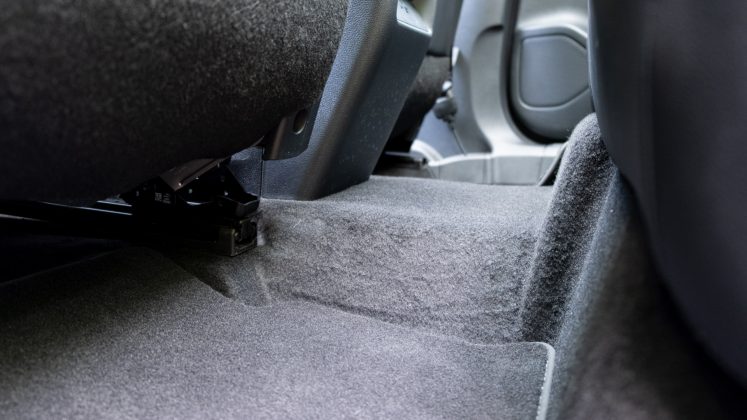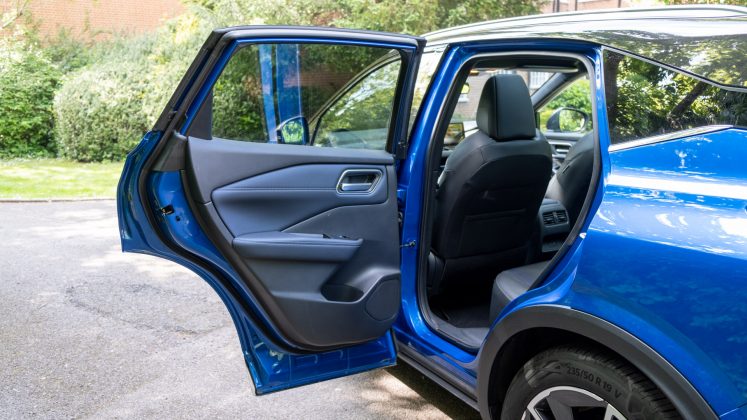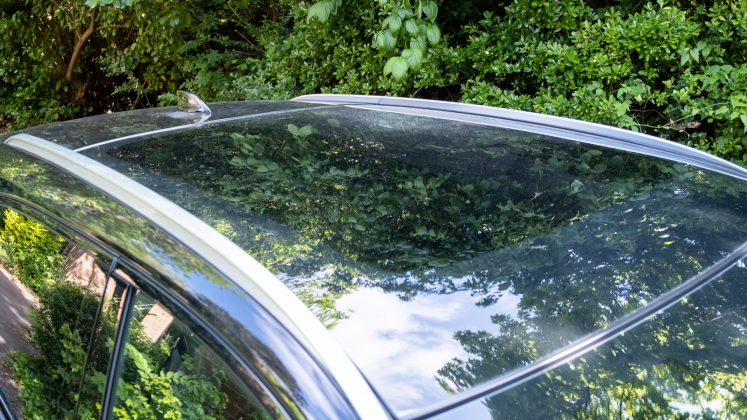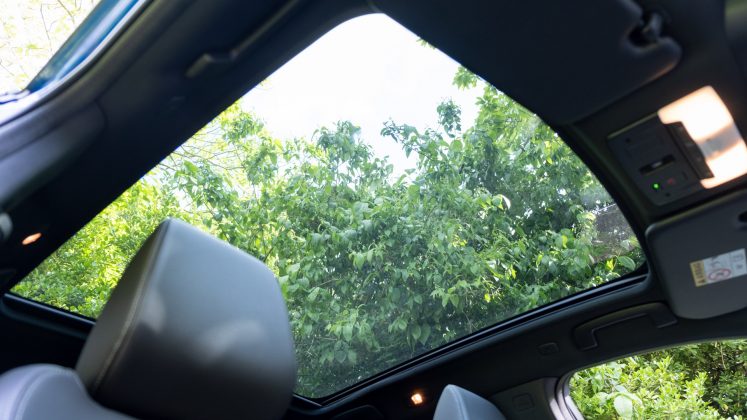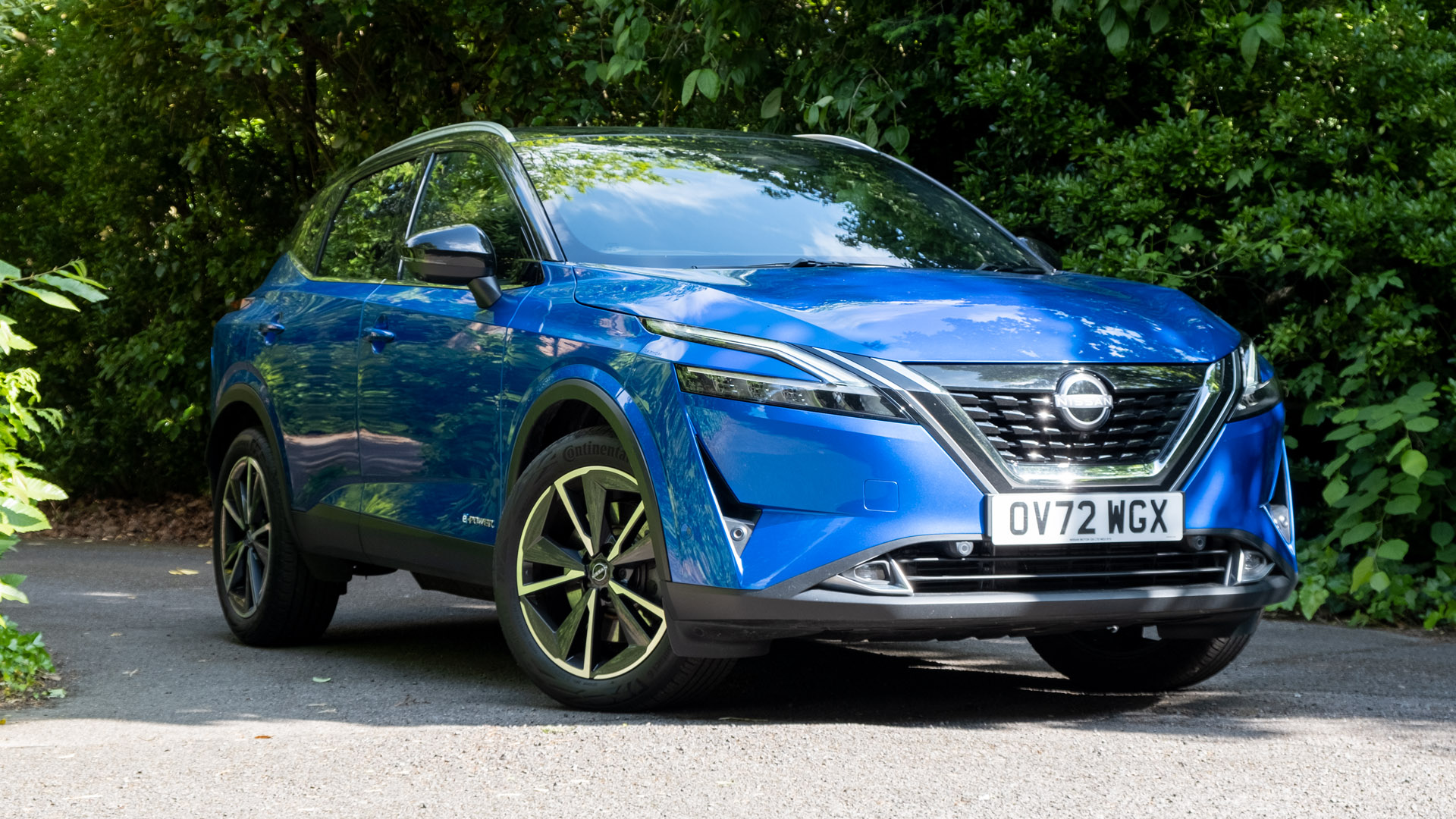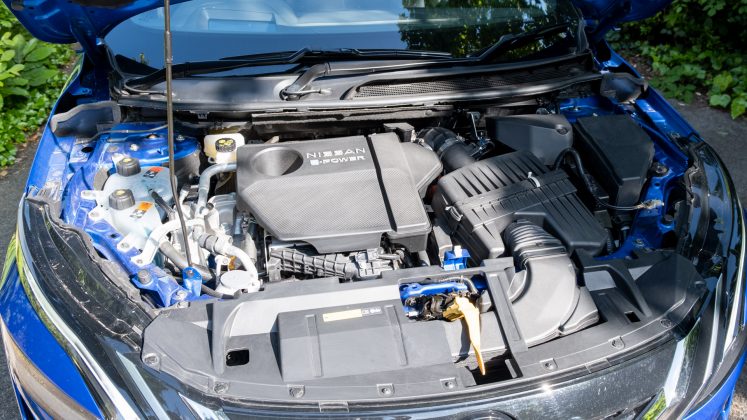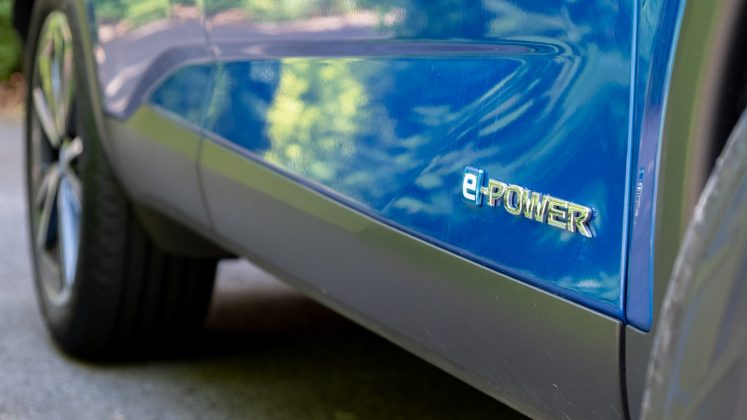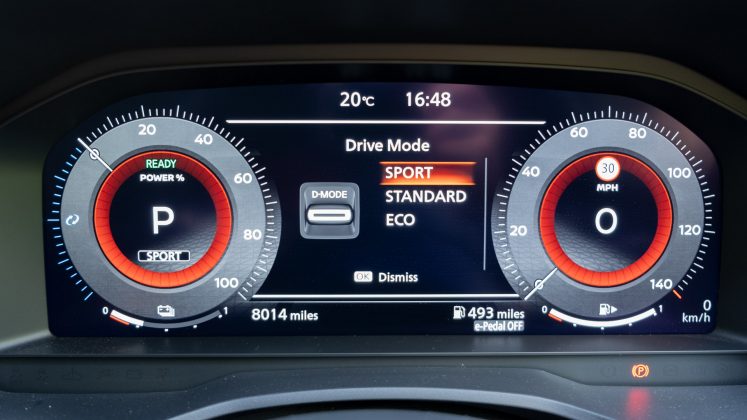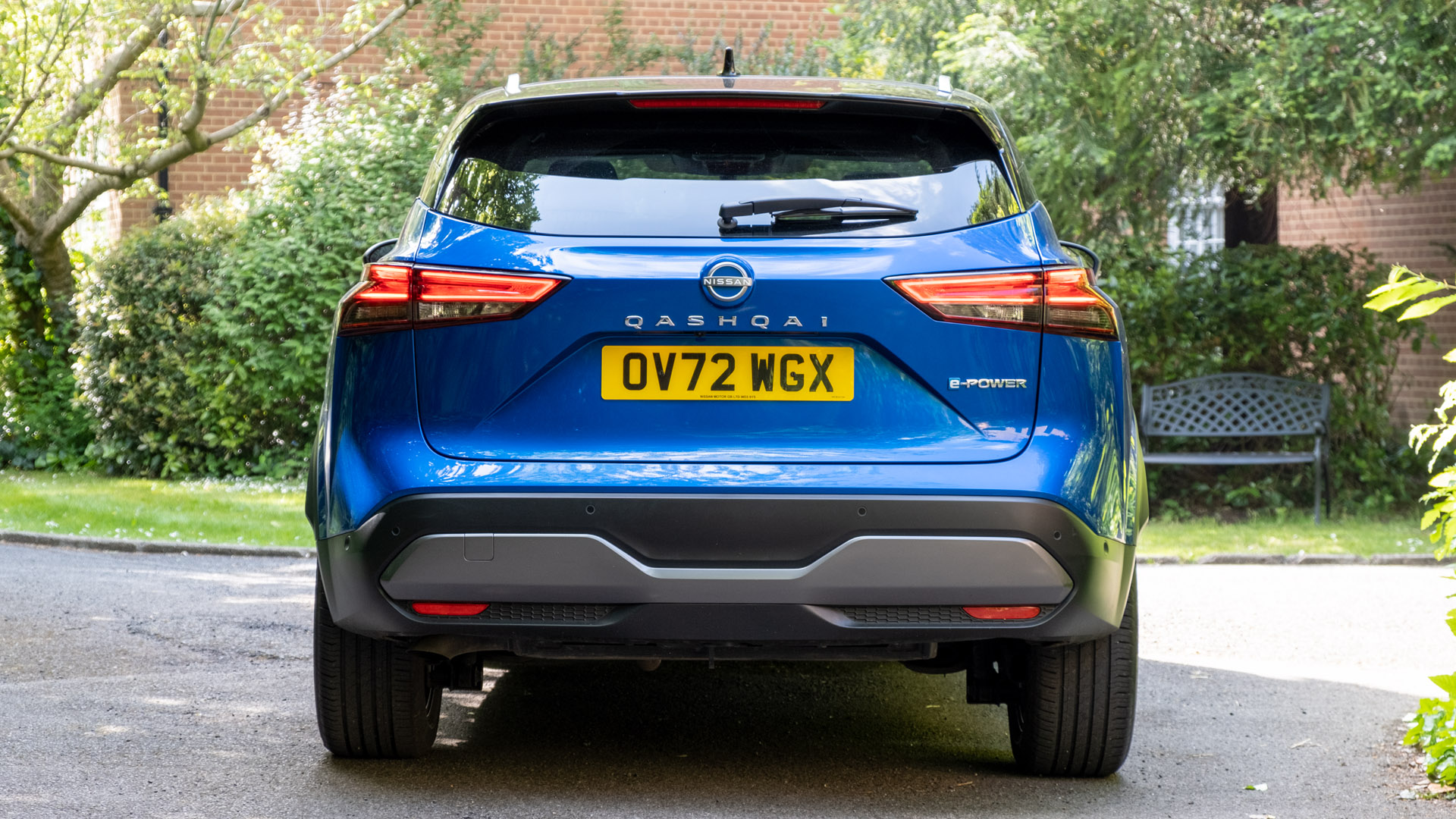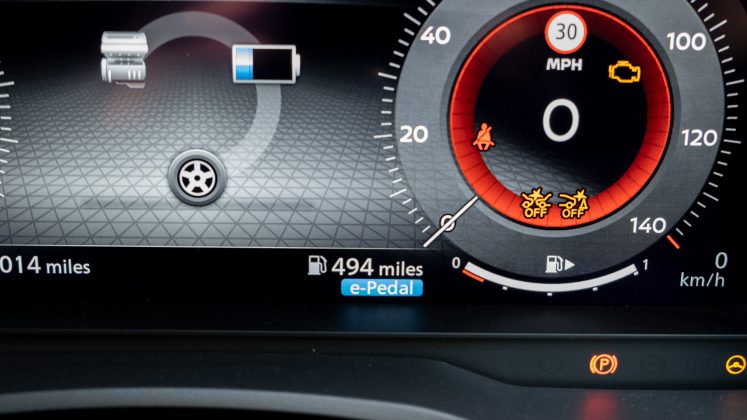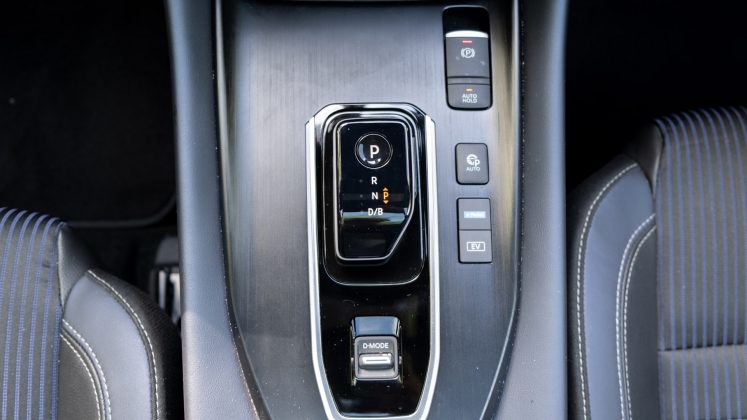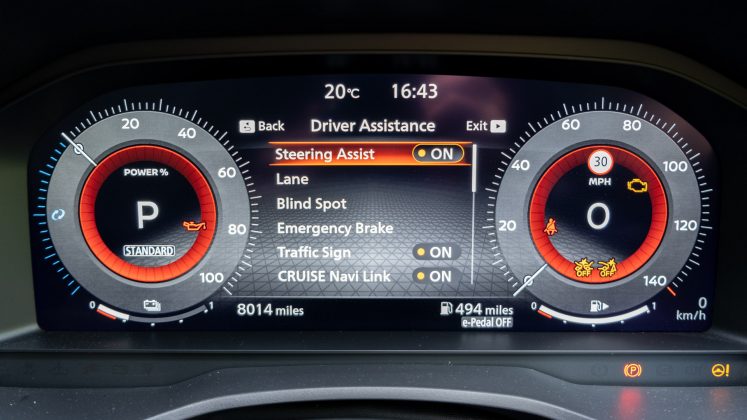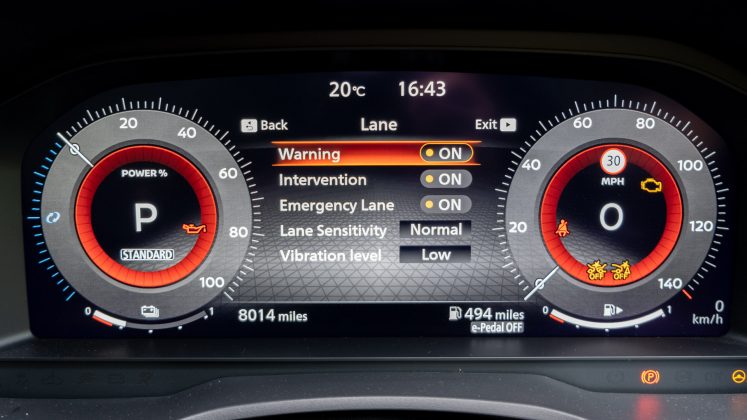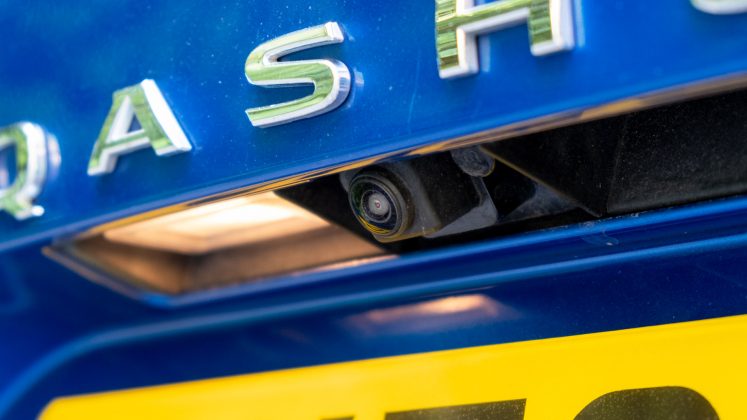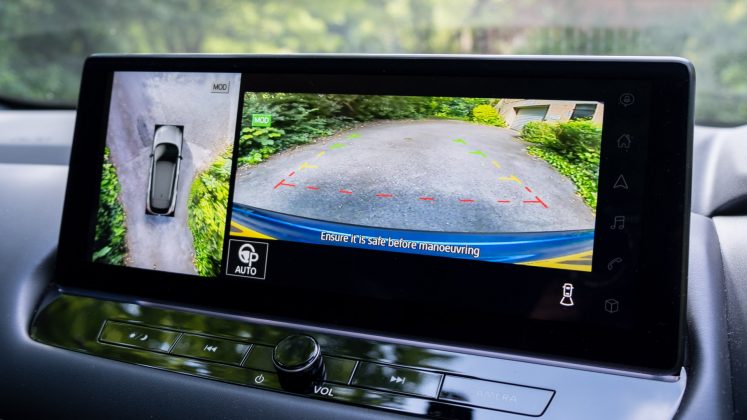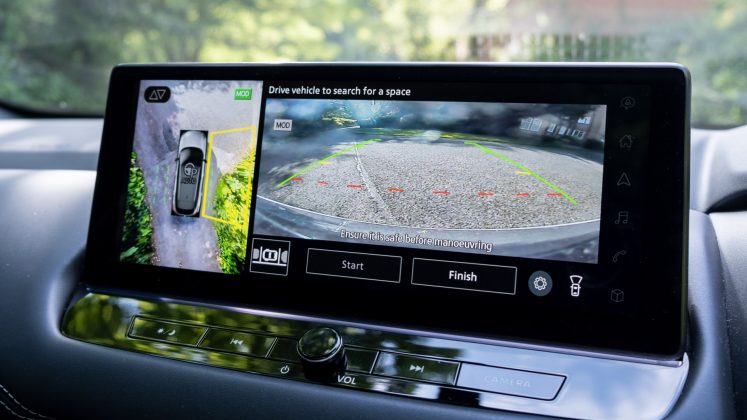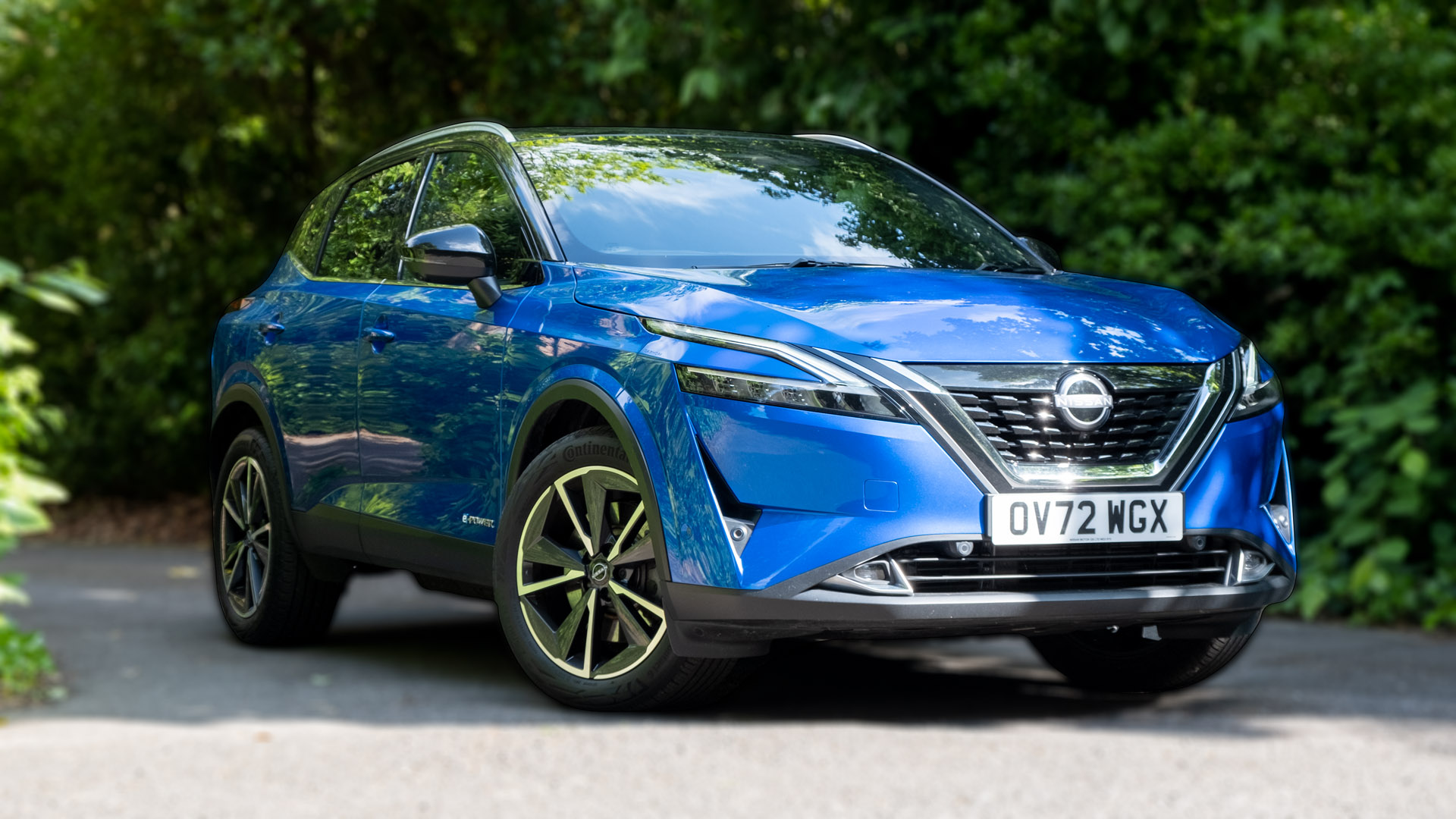The Nissan Qashqai has been around since 2006, with the third and current generation model released in 2021. The latest iteration sports the manufacturer’s unique e-Power technology, which effectively uses the 1.5-litre engine as a generator in order to charge the battery pack and in turn, power the electric motor to drive the front wheels.
At the time of writing and in the UK, e-Power is available in Nissan’s best-selling SUV, the Qashqai and its largest, the X-Trail, which we previously reviewed.
If you’d prefer to watch a review of the Nissan Qashqai, head on over to our YouTube channel.
Nissan Qashqai price & competition
It’s no surprise that the e-Power model is therefore more expensive than the regular mild-hybrid variant. Indeed, the Visia trim, which isn’t available with the e-Power technology, starts from £26,770. The Acenta Premium provides both powertrains as an option, with the mild-hybrid at £31,690 and the e-Power model at £33,670; prices rise to £41,700 without options for the top-spec e-Power Tekna+. A breakdown of the differences can be found below (click to expand):
Find the best Nissan Qashqai deals
In terms of the alternatives, there are numerous hybrids to consider: the Nissan Juke Hybrid from £27,250; Honda HR-V from £29,410; MG HS Plug-in Hybrid from £30,095; Grandland X Hybrid from £32,390; Citroen C5 Aircross from £34,275; Nissan X-Trail e-Power from £36,140; Cupra Formentor e-Hybrid from £36,170; Citroen C5 X Hybrid from £36,470; Ford Kuga PHEV from £36,555; Peugeot 3008 Hybrid from £37,310; Audi Q3 TFSIe from £38,335; BMW X2 xDrive 25e from £39,390; Kia Sportage PHEV from £40,400; Hyundai Tucson PHEV from £40,930; DS 7 Crossback E-Tense 4×4 from £41,550; Range Rover Evoque P300e PHEV £43,850; Kia Sorento Plug-in Hybrid from £45,245; Suzuki Across Hybrid from £46,629; and the BMW X3 xDrive30e from £50,600.
Buy a car phone mount on Amazon (Affiliate)
You might also want to consider a few of the fully electric alternatives: the MG ZS EV from £29,495; the Citroen e-C4 from £30,995; the Hyundai Kona Electric from £31,325; the Vauxhall Mokka-e from £32,695; the Peugeot e-2008 from £33,700; the Kia Soul EV from £34,995; the Kia Niro EV ‘2 64’ from £36,245; the Volkswagen ID.4 from £37,290; the Skoda Enyaq iV 60 from £38,380; the Hyundai Ioniq 5 from £41,900; and the Kia EV6 from £44,195. You’ve also got the MG5 EV, an all-electric estate that starts from £30,995.
Read next: Volkswagen ID.4 review: Better than the VW ID.3?
Nissan Qashqai exterior review
With its relatively affordable price to market, one might have expected the manufacturer to cut costs in design. Thankfully, that’s not the case, as the latest Qashqai looks the part. It’s reminiscent of the second-generation model but with a more elegant, up-market profile. The vehicle’s headlights are slim and stylish, its side profile is almost sporty with the 17-20″ alloys, and its perky rear look completes its identity.
As for the vehicle’s colour, there are a few variations with metallic finishes starting from £575 and extending up to £1,265 for a two-tone design. When it comes to towing, the Qashqai e-Power is rated at 750kg. A disappointment as its mild-hybrid siblings can tow up to 1,800kg. Roof load capacity, however, remains unchanged across the models at 100kg.
Read next: Cupra Formentor e-Hybrid review: Better than BMW X2?
Nissan Qashqai interior review
Inside, the Qashqai isn’t as snazzy as some of its rivals but unlike the rest, it retains a practical design with a flurry of physical buttons littered around the cabin. Indeed, the climate and media controls are easy to access, while the controls on the steering wheel make it a breeze to adjust settings while on the move.
Onto the use of technology, it’s surprising that even in this modern era, the manufacturer has chosen to omit a centre display in its entry-level Visia trim. Thankfully, in all e-Power models, which start from the Accenta Premium, you’ll find either an 8” or 12.3” display that supports Android Auto and Apple CarPlay over a wired connection. The latter system also works wirelessly in the N-Connecta trim and above. As for the driver’s display, there’s a part-digitalized 7” instrument cluster in the Visia and Accenta Premium models, while the N-Connecta trim and above sport a fully digitalized 12.3” display instead.
On the high-spec Tekna trims, you’ll also find a projected 10.8” Head-Up Display (HUD), which is a useful addition as it helps to keep your eyes planted on the road by displaying traversing speed and the safety systems that are in operation. However, it is a shame that both the driver’s display and HUD fail to feed through navigation data from the supported third-party operating systems.
As for the vehicle’s audio system, there are a measly four speakers found in the entry-level Visia, six in the Accenta Premium and N-Connecta and an optional £590 10-speaker Bose configuration in the Tekna trim (it’s fitted as standard in the top-spec Tekna+). If you’d like to hear how the latter system performs, watch our detailed review on YouTube.
Nissan Qashqai storage review
When it comes to storage, the Qashqai offers plenty of space within the cabin. At the front, you’ll find a handy non-slip bay at the top of the centre console for a smartphone that doubles up as a wireless charging bay in certain trims, a sizeable compartment within the centre armrest and a small tray that resides just above it allowing you to compartmentalize. While at the rear, in the Accenta Premium trims and above, you’ll find a pulldown armrest with cupholders.
Not all areas have been optimised, however, as the glove box hasn’t been catered for the right-hand drive market, while the cupholders found within the centre console won’t properly accommodate smaller-sized bottles or cups due to their widened design. Equally, it’s disappointing that none of the door bins have been lined in fabric and as a result, loose change and keys will be heard rattling about when traversing uneven terrain.
As for its boot, there’s between 455-504 litres with the seats in place and up to 1,379-1,440 with them dropped down. The slight variance is due to the more expensive trim levels having extra equipment at the rear, including a subwoofer in the Tekna trims that have a Bose subwoofer.
Here’s how the it stacks up to other electrified SUVs: Land Rover Discovery Sport P300e (1,179/1,794 litres); Tesla Model Y (854/2,100 litres); Skoda Enyaq iV (585/1,710 litres); Hyundai Tucson PHEV (558/1,737 litres); VW Passat Estate GTE (483/1,613 litres); VW ID.4 (543/1,575 litres); Hyundai Ioniq 5 (520/1,587 litres); Skoda Octavia iV Estate (490/1,555 litres); Citroen C5 X Hybrid (485/1,580 litres); Citroen C5 Aircross (460/1,510 litres); Nissan X-Trail (485-575/1,298-1,386); Kia EV6 (490/1,300 litres); MG ZS EV (448/1,375 litres); Peugeot e-2008 (434/1,467 litres); Range Rover Evoque P300e (591/1,383 litres); Kia Soul EV (315/1,339 litres); Cupra Formentor e-Hybrid (345/1,475 litres); Suzuki Across Hybrid (490/1,168 litres); Citroen e-C4 (380/1,250 litres); BMW X2 xDrive 25e (410/1,290 litres); Nissan Juke Hybrid (354/1,237 litres); Honda HR-V (320/1,290 litres); Hyundai Kona Electric (332/1,114 litres); Vauxhall Mokka-e (310/1,060 litres). As for the MG5 EV estate, it offers 479 and 1,367 litres, respectively.
Aside from storage capacity, the Qashqai has 60:40 rear-split folding seats; it’s a shame not to see a 40:20:40 option for those who want to transport elongated goods. Nonetheless, it’s still very practical as there’s a wide-opening hatchback design, a flat loading bay, a practical underfloor compartment, and a removable boot load cover. Better still, in the Tekna trims, you’ll find an electronically-operated tailgate – although, when opened or closed it has a loud beeping sound, which is rather annoying as it might disturb your neighbours and can’t be silenced.
Read next: Skoda Enyaq iV review: The Volkswagen ID.4 alternative
Nissan Qashqai comfort review
Another inconvenience is that there is a sizeable transmission tunnel at the rear of the cabin, which means those sitting in the middle might feel a little uncomfortable on longer journeys. Equally, due to the diagonal design of the rear seats, those with longer legs might have tired quad muscles. As for headroom and legroom, it’s a little limited at the rear of the cabin, which means 6-foot 2-inches (188cm) individuals might feel a little henned in. However, it’s a non-issue at the front.
Speaking of which, the front two seats are manually adjustable in the Visia and Accenta Premium trims. Eight-way electronic driver controls and two-way lumbar support for the passenger become available in the Tekna trim. As for the top-spec Tekna+ trim, it adds four-way lumbar support for both occupants and a massage function. Elsewhere, you’ll find heated front seats, a heated windscreen and steering wheel in both the Tekna trims.
Find the best Nissan Qashqai deals
Should you want extra light to come into the cabin, a glass sunroof costs an additional £800 in the N-Connecta and is featured as standard in both the Teka trims. No matter which trim level you opt for, you’ll find the rear doors have a wide opening – 85 degrees to be more specific. This makes it perfect for frequenting the rear of the cabin, for example, for a child seat.
As for cabin noise, the Qashqai isn’t too shabby at lower speeds but does suffer a little at higher speeds and when driving on rougher terrain. You can find in-cabin sound measurements on our dedicated audio review.
Nissan Qashqai performance review
To aid the driving experience, Nissan has integrated a soft suspension setup. It does a valiant job of reducing that see-sawing effect when going over speed bumps in the city, however, struggles when faced with a multitude of potholes and anomalies. Granted, it’s more comfortable than sportier SUVs, but it’s no match for the Citroen C5 X Hybrid, which integrates a floaty-like suspension system.
Given its configuration, it’s no surprise to learn that the Nissan suffers from a bit of body roll. It hasn’t got the best driver’s input either, but we suspect most consumers wouldn’t be buying the Qashqai for spirited driving. However, that’s not to say it’s a slow vehicle, far from it. Using Racelogic’s Performance Box Touch, we had the e-Power model tested from 0-20mph in 2.51s, 0-30mph in 3.74s, 0-60mph in 8.1s and from 50-70mph in 3.73s. Max speed is rated at 105mph in the e-Power model and 128mph in the mild-hybrids.
This is the result of the front-mounted electric motor providing 188 hp (140 kW) of power and 330 Nm of torque. The MHEV models rely solely on the front-mounted 1.3-litre variable compression ratio turbocharged four-cylinder for power. As such, these non-e-Power models output between 138-156 hp (103-116 kW) and 240-270 Nm of torque.
As you might have noted, the Qashqai only has a singular electric motor, which means it operates on a front-wheel drive (FWD) system only. A small point to make as some of its rivals, such as the Hyundai Tucson PHEV, are available as an all-wheel drive (AWD) vehicle while its larger sibling, the X-Trail e-Power, is offered as both a four-wheel drive (4WD) and FWD.
Similarly, the Qashqai e-Power doesn’t feature the more advanced Xtronic Continuously Variable Transmission (CVT) system but rather a more simplistic CVT configuration. As such, one cannot adjust the vehicle’s response as there are no flappy paddles behind the steering wheel.
Buy a car phone mount on Amazon (Affiliate)
Now you might wonder why we’ve not referenced the 1.5-litre three-cylinder engine when it comes to power delivery in the e-Power models. The reason is quite simple, in said variant, it’s not connected to the drivetrain. Instead, the engine solely acts as a generator for the small-sized battery, which in turn provides power to the electric motor.
It’s certainly an odd configuration and one that differentiates itself from other hybrids on the market, but according to the manufacturer this has been done to provide a seamless EV-driving experience at all times. At no point do you have to wait for the engine to kick in or worry about the transition between electric and petrol power delivery. In some ways, it’s like driving an EV at all times but without having to worry about replenishing the vehicle’s batteries, as in the Nissan Qashqai, it’s always topped up by the generator.
It is worth highlighting that if the battery is fully topped up, the vehicle will operate in EV mode only. You can also force it to run in pure electric mode at any time by pressing the dedicated EV button found on the centre console, however, this will only last you a couple of miles before the generator is required to recharge the battery.
So, how does the automaker’s clever technology affect fuel efficiency? Well, in our mixed driving tests, we netted 50-53 MPG, which is neither an impressive figure nor one that is overly offensive.
Our tested figure is actually very close to the manufacturer’s official claim of 53.6-54.6 MPG on the combined WLTP driving cycle. This therefore allows us to compare the e-Power model to the MHEV variants, which net between 40.4 and 45.6 MPG; thus showing a sizeable improvement.
It’s great to see such transparency from the automaker as many of its competitors grossly inflate their claims to attract customers. Speaking of which, here’s how it compares to some of its rivals: the Citroen C5 X Hybrid attained 74.2 MPG, the Cupra Formentor e-Hybrid 64 MPG, the VW Passat Estate GTE 60-65 MPG, the Citroen C5 Aircross Hybrid 58 MPG, Suzuki Across Hybrid 55-61 MPG, the Skoda Octavia iV Estate, Honda HR-V 55 MPG, Hyundai Tucson PHEV 42.7 MPG, Nissan X-Trail 42.6 MPG, the Range Rover Evoque P300e 40 MPG, the BMW X2 xDrive 25e 39 MPG, the Nissan Juke Hybrid 35-40 MPG, the Jeep Renegade 4xe attained 36 MPG and the Land Rover Discovery Sport P300e a measly 35 MPG.
Now to be as efficient as possible and to maximise electric range, you might want to shift to B-mode via the gear selector or enable e-Pedal mode by pressing the button found beside it. Both will provide some degree of regenerative braking, with the latter being the harsher out of the two and overriding the former mode.
Unfortunately, Nissan loyalists will be disappointed to learn that one can’t drive with a singular pedal in e-Pedal mode, meaning you’ll have to resort to using the physical brake pedal to come to a complete standstill. Furthermore, you’ll also have to initiate either B- or E-Pedal mode each time you power on the vehicle, which is rather cumbersome.
As for total driving range, on a full tank of petrol, you should be able to attain around 500 miles from its 55-litre tank without having to stop to refuel. Of course, this is dependent on how and where you drive, so expect a bit of variation.
Read next: Citroen C5 X review: Hybrid perfection?
Nissan Qashqai safety review
When it comes to crash safety, the 2019 Qashqai received a full 5/5 stars by Euro NCAP. It scored an impressive 91% in Adult Occupancy, 91% in Child Occupancy and a whopping 95% in the Safety Assist tests.
From testing, it’s clear to see why the vehicle excelled in the latter tests, as the manufacturer has included a plethora of driver assistance systems as standard across all trim levels; you’ll find: Intelligent Front Emergency Braking with Pedestrian, Cyclist & Junction assist, Intelligent Forward Collision Warning, Lane Departure Warning, Lane Departure Prevention, Blind Spot Warning, Blind Spot Intervention, Driver Attention Alert, Rear Cross Traffic Alert, Rear Automatic Braking, High beam assist, Emergency stop signal (auto-hazard), Traffic sign recognition and Intelligent Cruise Control.
We were particularly fond of the adaptive cruise control, which not only correctly regulated the distance from the leading vehicle but also provided a smooth experience while on the motorway. It’s bettered in the Tekna trims, which add ProPILOT Assist with Navi-Link that adds steering support. You will have to keep your hands on the wheel at all times, but it does alleviate stress on longer mundane trips.
As for parking, the vehicle is surprisingly easy to manoeuvre. It has a turning circle of just 11.1 meters. Visibility is excellent too, with rear sensors fitted as standard across all trims, and front sensors added in the N-Connecta trim and above. A rearview camera can be found in all the e-Power variants, while a surround view monitoring system (360-degree cameras) is present in the N-Connecta trim and above.
Read next: New Honda HR-V review: Best hybrid SUV?
TotallyEV’s verdict on the Nissan Qashqai
Nissan’s most popular SUV is feature-packed, practical, stylish and rather nippy. However, it is worth considering that if fuel economy is your top priority you’ll find Citroen, Cupra, Honda, Skoda, Suzuki and Volkswagen all offering compelling alternatives. Nonetheless, the Qashqai is still worth shortlisting, especially if you’re looking for an affordable family-sized SUV.
Find the best Nissan Qashqai deals
What do you make of the third-generation Qashqai? Let us know in the comments section below or via social media; we’re on: YouTube, Instagram, Facebook, Twitter and LinkedIn.

